Related Research Articles

Ballet is a type of performance dance that originated during the Italian Renaissance in the fifteenth century and later developed into a concert dance form in France and Russia. It has since become a widespread and highly technical form of dance with its own vocabulary. Ballet has been influential globally and has defined the foundational techniques which are used in many other dance genres and cultures. Various schools around the world have incorporated their own cultures. As a result, ballet has evolved in distinct ways.
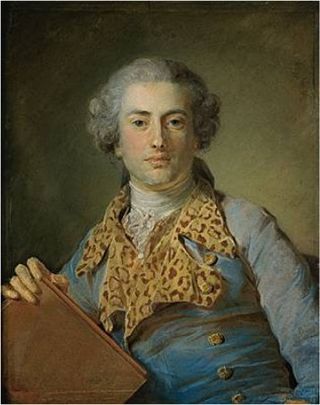
Jean-Georges Noverre was a French dancer and ballet master, and is generally considered the creator of ballet d'action, a precursor of the narrative ballets of the 19th century. His birthday is now observed as International Dance Day.

Orfeo ed Euridice is an opera composed by Christoph Willibald Gluck, based on the myth of Orpheus and set to a libretto by Ranieri de' Calzabigi. It belongs to the genre of the azione teatrale, meaning an opera on a mythological subject with choruses and dancing. The piece was first performed at the Burgtheater in Vienna on 5 October 1762, in the presence of Empress Maria Theresa. Orfeo ed Euridice is the first of Gluck's "reform" operas, in which he attempted to replace the abstruse plots and overly complex music of opera seria with a "noble simplicity" in both the music and the drama.

The history of dance is difficult to access because dance does not often leave behind clearly identifiable physical artifacts that last over millennia, such as stone tools, hunting implements or cave paintings. It is not possible to identify with exact precision when dance becomes part of human culture. Dance is filled with aesthetic values, making it distinct from one society to another and is shrouded in symbolism that expounds on the cultural heritage of a community accordingly being unique from one society to another. Dance can help tell a story, convey feelings and emotions, and connect with others and ourselves.
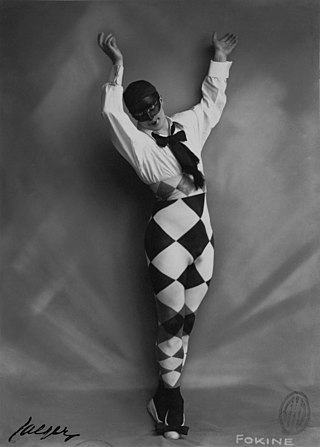
Michael Fokine was a Russian choreographer and dancer.
Postmodern dance is a 20th century concert dance form that came into popularity in the early 1960s. While the term "postmodern" took on a different meaning when used to describe dance, the dance form did take inspiration from the ideologies of the wider postmodern movement, which "sought to deflate what it saw as overly pretentious and ultimately self-serving modernist views of art and the artist" and was, more generally, a departure from modernist ideals. Lacking stylistic homogeny, Postmodern dance was discerned mainly by its anti-modern dance sentiments rather than by its dance style. The dance form was a reaction to the compositional and presentational constraints of the preceding generation of modern dance, hailing the use of everyday movement as valid performance art and advocating for unconventional methods of dance composition.
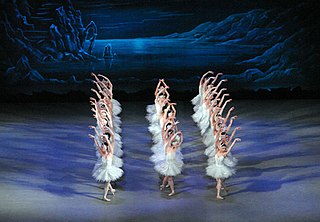
A narrative ballet, also known as classical ballet or story ballet is a form of ballet that has a plot and characters. It is typically a production with full sets and costumes. It was an invention of the eighteenth century.

Charles Felix Richard Auguste Le Picq was an influential French dancer and choreographer. One of the most outstanding dancers of the eighteenth century.
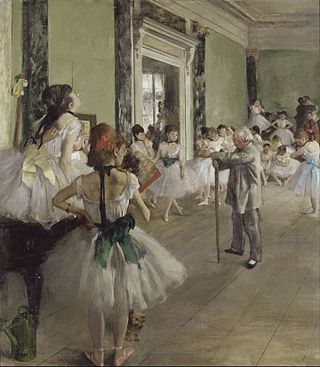
A ballet master is an employee of a ballet company who is responsible for the level of competence of the dancers in their company. In modern times, ballet masters are generally charged with teaching the daily company ballet class and rehearsing the dancers for both new and established ballets in the company's repertoire. The artistic director of a ballet company, whether a male or female, may also be called its ballet master. Historic use of gender marking in job titles in ballet is being supplanted by gender-neutral language job titles regardless of an employee's gender.

John Weaver is widely regarded as the father of English ballet and of English pantomime.
The Loves of Mars and Venus by John Weaver was arguably the first modern ballet, the first dance work to tell a story through dance, gesture and music alone. Its first performance was at London's Drury Lane Theatre on Saturday 2 March 1717.

Marie Sallé (1707–1756) was a French dancer and choreographer in the 18th century known for her expressive, dramatic performances rather than a series of "leaps and frolics" typical of ballet of her time.
The Green Table is a ballet by the German choreographer Kurt Jooss. His most popular work, it depicts the futility of peace negotiations of the 1930s. It was the first work to be fully notated using kinetography Laban (Labanotation). It is in the repertoire of ballet companies worldwide, where it has been staged by Jooss himself. Since his death in 1979, his daughter Anna Markard has been responsible for stagings of the work.
Franz Anton Christoph Hilverding (1710–1768), aka Hilferding, was an Austrian choreographer and dancer.

Boris Eifman is a Russian choreographer and artistic director. He has done more than fifty ballet productions.

Ballet is a formalized form of dance with its origins in the Italian Renaissance courts of 15th and 16th centuries. Ballet spread from Italy to France with the help of Catherine de' Medici, where ballet developed even further under her aristocratic influence. An early example of Catherine's development of ballet is through 'Le Paradis d' Amour', a piece of work presented at the wedding of her daughter Marguerite de Valois to Henry of Navarre. Aristocratic money was responsible for the initial stages of development in 'court ballet', as it was royal money that dictated the ideas, literature and music used in ballets that were created to primarily entertain the aristocrats of the time. The first formal 'court ballet' ever recognized was staged in 1573, 'Ballet des Polonais'. In true form of royal entertainment, 'Ballet des Polonais' was commissioned by Catherine de' Medici to honor the Polish ambassadors who were visiting Paris upon the accession of Henry of Anjou to the throne of Poland. In 1581, Catherine de' Medici commissioned another court ballet, Ballet Comique de la Reine, however it was her compatriot, Balthasar de Beaujoyeulx, who organized the ballet. Catherine de' Medici and Balthasar de Beaujoyeulx were responsible for presenting the first court ballet ever to apply the principles of Baif's Academie, by integrating poetry, dance, music and set design to convey a unified dramatic storyline. Moreover, the early organization and development of 'court ballet' was funded by, influenced by and produced by the aristocrats of the time, fulfilling both their personal entertainment and political propaganda needs.

Les Fêtes Chinoises is an 18th-century ballet by Jean-Georges Noverre (1727–1810). The exact date of the ballet's composition is unknown.
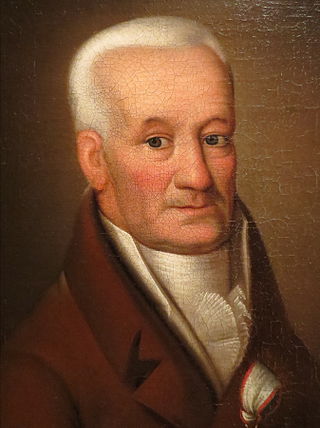
Vincenzo Galeotti was an Italian-born Danish dancer, choreographer and ballet master, who was influential as the director of the Royal Danish Ballet from 1775 until his death.
Ismène et Isménias, ou La fête de Jupiter is an opera by the French composer Jean-Benjamin de La Borde, first performed on 13 June 1763 at the Château de Choisy in the presence of King Louis XV and his wife. It takes the form of a tragédie lyrique in three acts. The librettist is Pierre Laujon.
Judith Chazin-Bennahum is a ballet dancer, choreographer, dance historian, writer, and educator. A leader in the field of dance scholarship, she spent her academic career at the University of New Mexico, where she now holds the title of Distinguished Professor Emerita of Dance.
References
- ↑ Noverre, Jean-Georges. "Letter 1". Letters on Dancing and Ballets. 1760, rev. 1803. In What is Dance? Readings in Theory and Criticism, Roger Copeland and Marshall Cohen. Oxford University Press, 1983. Oxford, UK.
- 1 2 Nye, Edward. Mime, Music and Drama on the Eighteenth-Century Stage: The Ballet d'Action, Cambridge University Press, 2011. Cambridge, UK, pp. 1–6, 140–154, 170–177, 229–232.
- ↑ Weaver, John. "Essay Towards a History of Dancing". Shakespeare's Head, 1712. London, Britain, pp. 157–169.
- ↑ McCleave, Sarah. "Marie Sallé, a Wise Professional Woman of Influence". Women's Work: Making Dance in Europe before 1800, edited by Lynn Matluck Brooks, University of Wisconsin Press, 2007. Madison, Wisconsin.
- Sabee, Olivia (2016). "Théophile Gautier's Ballet d'Action: Rewriting Dance History through Criticism". Dance Chronicle. 39: 153–173.